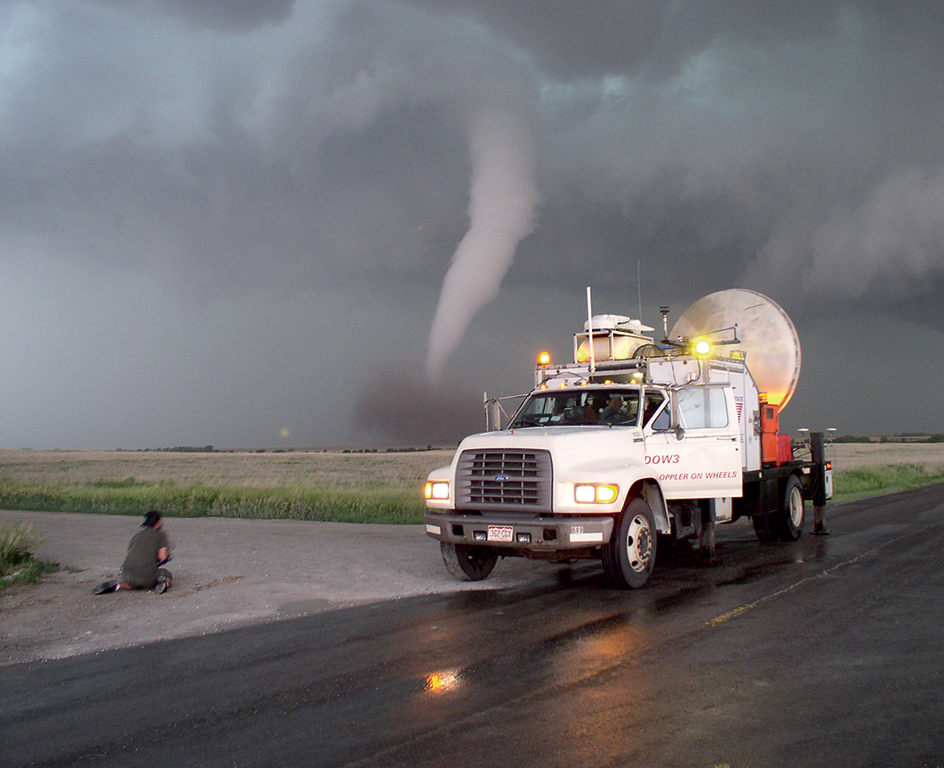Storm chaser is a person that watches for and follows tornadoes and the thunderstorms that may produce them. Research scientists and amateurs alike chase storms . Chasing a severe storm in a motor vehicle can be dangerous.
Scientists chase storms to make measurements using Doppler radar devices mounted on trucks . Doppler radar devices make use of microwave signals to detect changes in wind speed and direction. Scientists also chase storms to place scientific instruments in the storms’ path and ahead of tornadoes. Data gathered using these methods help scientists to learn how and why tornadoes form. 
Amateurs chase storms for other reasons. Some are “weather spotters,” who contact a service such as the United States National Weather Service or the media when they see tornadoes or other severe weather. This information helps the National Weather Service and the media warn the public about severe weather. Other people chase storms just for excitement and to take spectacular videos and photographs.
Most storm chasers operate during the spring in the Interior Plains region of the United States, the time and place in which tornadoes are most frequent. In the summer and fall, a few chase hurricanes as they make landfall along the U.S. Gulf or Atlantic coast.
Beginning in the mid-1950’s, a few adventurous people began to drive to thunderstorms to take close-up photographs of storms and tornadoes. The development of the U.S. Interstate Highway System , beginning in the 1950’s, made it easier to chase storms in motor vehicles. The first mobile Doppler radar devices were developed in the mid-1980’s. The National Severe Storms Laboratory was established in 1964 in Norman, Oklahoma. These developments helped scientists and university students to chase storms in a more organized way.
Storm chasing can be dangerous. It may involve driving on poor roads in low visibility and heavy rains. Storm chasing vehicles may be hit by large, damaging hail and struck by strong winds. Chasing at night is particularly dangerous, because it is difficult to see if a tornado is approaching. Anyone who wishes to chase storms should first consult with an experienced chaser. The growing popularity of storm chasing has made it even more dangerous, because an excess of chase vehicles can clog small country roads, making it difficult to follow storms safely.
